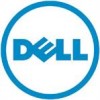Dell External OEMR 1435 User Guide - Page 149
Abbreviation for Transmission Control Protocol/Internet Protocol. A system
 |
View all Dell External OEMR 1435 manuals
Add to My Manuals
Save this manual to your list of manuals |
Page 149 highlights
TCP/IP Abbreviation for Transmission Control Protocol/Internet Protocol. A system for transferring information over a computer network containing dissimilar systems, such as systems running Windows and UNIX. text editor An application program for editing text files consisting exclusively of ASCII characters. Windows Notepad is a text editor, for example. Most word processors use proprietary file formats containing binary characters, although some can read and write text files. text mode A video mode that can be defined as x columns by y rows of characters. UART Acronym for universal asynchronous receiver-transmitter. The UART is a system component that handles asynchronous serial communication by converting parallel bytes from the processor into serial bits for transmission (and vice versa). unicode A fixed width, 16-bit world wide character encoding, developed and maintained by the Unicode Consortium. URL Abbreviation for Uniform Resource Locator (formerly Universal Resource Locator). USB Abbreviation for Universal Serial Bus. A USB connector provides a single connection point for multiple USB-compliant devices, such as mice, keyboards, printers, and computer speakers. USB devices can also be connected and disconnected while the system is running. utility A program used to manage system resources-memory, disk drives, or printers, for example. utility partition A bootable partition on the hard drive that provides utilities and diagnostics for your hardware and software. When activated, the partition boots and provides an executable environment for the partition's utilities. Glossary 149















